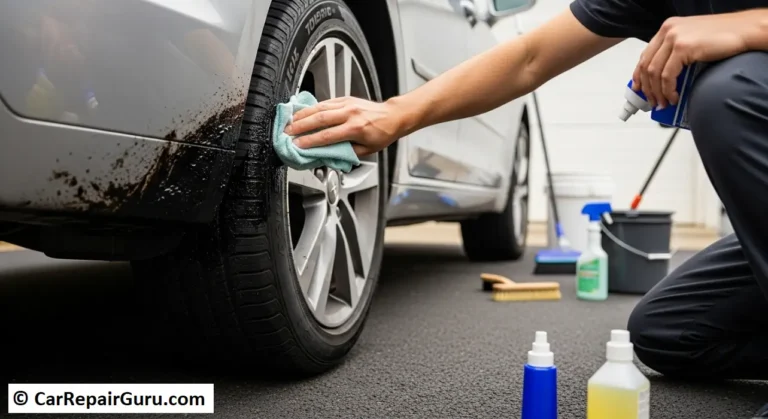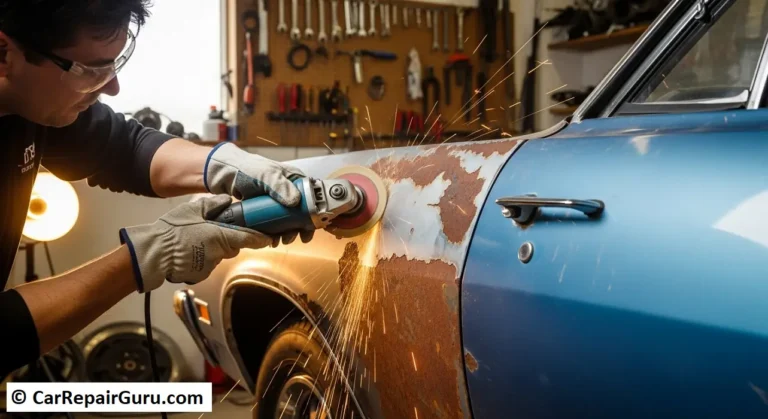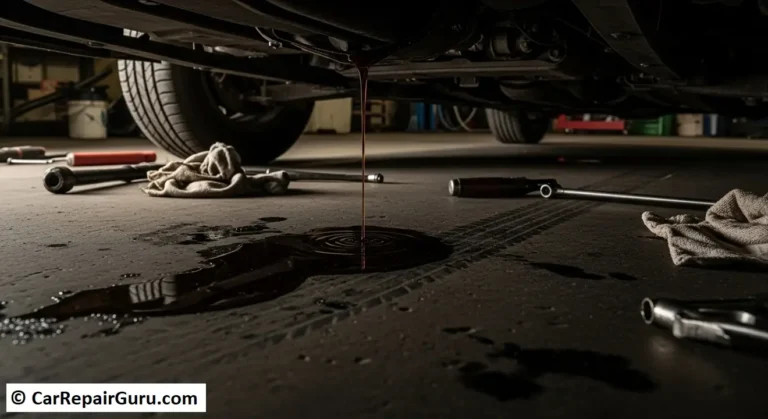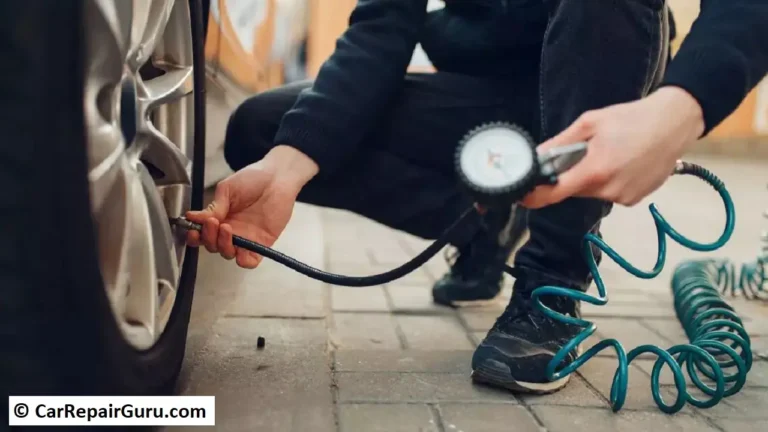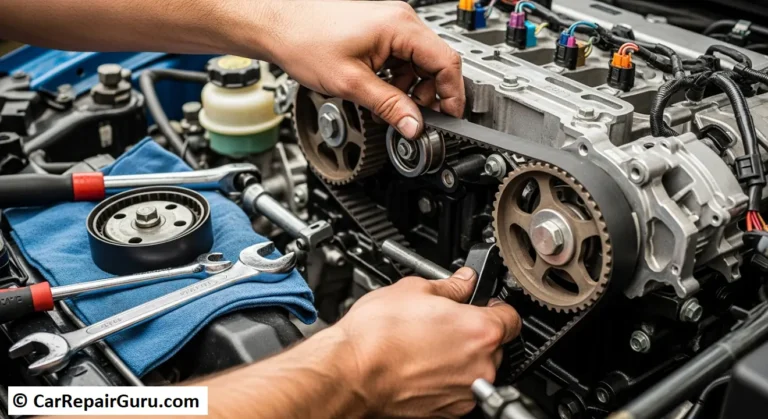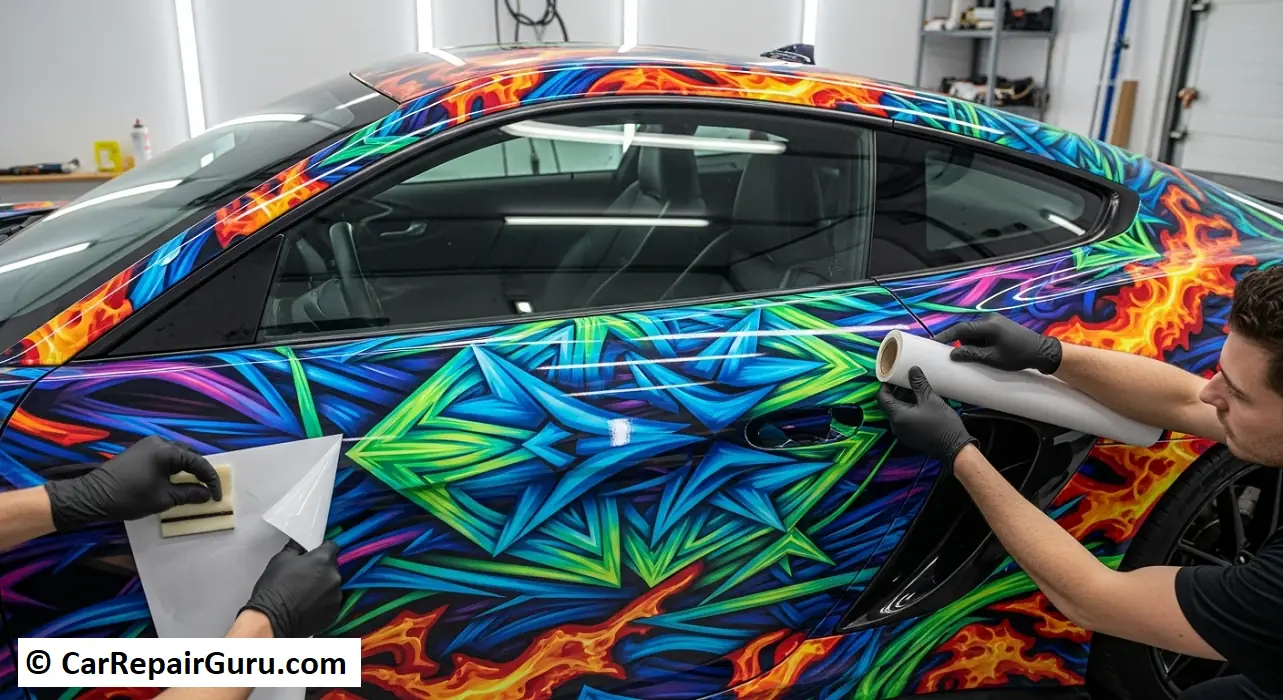
Ever looked at your car and wished you could instantly change its color, give it a unique finish, or simply protect its factory paint from the rigors of the road? You’re not alone. Welcome to the world of vinyl wraps—the single most effective way to completely transform your vehicle’s appearance without a permanent commitment.
A vehicle wrap is essentially a high-tech “second skin” for your car. It’s a removable, adhesive film that can be applied to every curve and panel, opening up a universe of customization that traditional paint can’t match. But is a car wrap right for you?
In this ultimate guide, we’ll peel back the layers on vinyl wraps. We’ll explore the incredible benefits, break down the real-world costs, settle the great “vinyl wrap vs. paint” debate, and show you how to care for your new look. Let’s get started.
What is a Car Vinyl Wrap?
At its core, a car vinyl wrap is a large sheet of incredibly durable, adhesive-backed vinyl film. Think of it as a giant, high-quality sticker designed specifically for vehicles. This isn’t the craft-store vinyl you might be picturing; leading brands like 3M and Avery Dennison have engineered these films to be flexible, weather-resistant, and safe for your car’s paint.
The process involves meticulously applying this vinyl film over your vehicle’s original paint. A skilled installer heats and stretches the material to conform perfectly to every contour, from the wide, flat hood to the intricate curves of a bumper. The result is a seamless, paint-like finish that looks like it came directly from the factory.
And it’s not just for cars. Vinyl wraps can be applied to trucks, motorcycles, boats, commercial vans, and even interior trim pieces. It’s a versatile solution that serves a powerful dual purpose: breathtaking aesthetics and robust paint protection.
The Top 7 Benefits of Wrapping Your Car
Why are so many car enthusiasts and daily drivers choosing vinyl? The advantages go far beyond just a new color.
1. Limitless Customization & Style
This is the biggest draw. With a traditional paint job, your choices are limited. With a wrap, the options are nearly infinite. You can choose from hundreds of colors and finishes that aren’t practical or even possible with paint, including:
- Matte & Satin: Sleek, non-reflective finishes that look modern and aggressive.
- Gloss: A classic, shiny look that mimics high-quality paint.
- Chrome & Color-Shift: Head-turning finishes that change color depending on the light and viewing angle.
- Textured: Finishes like carbon fiber, brushed aluminum, and even leather.
- Custom Printed: You can print any design, logo, or image imaginable onto a wrap, making your car a true one-of-a-kind creation.
2. A Protective Shield for Your Paint
Think of a vinyl wrap as a stylish suit of armor for your car. It acts as a protective barrier between your delicate factory paint and the outside world. It effectively guards against:
- Minor scratches and scuffs
- Stone chips from highway driving
- Damaging UV rays that cause paint to fade
- Bird droppings, tree sap, and other environmental contaminants
This layer of paint protection is one of the most practical benefits of car wraps.
3. Cost-Effective Transformation
While a quality wrap isn’t cheap, it is often significantly more affordable than a comparable full-color-change paint job. A high-end paint job that changes a car’s color can easily exceed $10,000 and take weeks to complete. A professional wrap provides a flawless finish for a fraction of that cost.
4. Speed of Installation
A quality paint job is a long, drawn-out process involving sanding, priming, multiple coats, and curing—often taking two weeks or more. A full vinyl wrap installation is much faster. Most vehicles can be fully prepped, wrapped, and ready for pickup in just 2-5 days.
5. Preserves Resale Value
This is a huge, often overlooked benefit. When you decide to sell your car, a potential buyer’s biggest concern is the condition of the body and paint. Because the wrap has been protecting the original paint the entire time, you can have it professionally removed to reveal a pristine, factory-perfect finish underneath. This can significantly boost your car’s resale value.
6. Easy Maintenance
Tired of the endless cycle of washing, claying, polishing, and waxing? Vinyl wrap maintenance is refreshingly simple. A gentle hand wash with a pH-neutral soap is all you need to keep it looking great. Matte and satin finishes, in particular, benefit from not needing any wax, which would ruin their unique sheen.
7. It’s Completely Reversible
Perhaps the most liberating benefit of a vinyl wrap is that it’s not permanent. If you get tired of the color in a few years, want to sell the car, or are returning a leased vehicle, the wrap can be safely removed by a professional, revealing the original paint in the exact condition it was in when it was wrapped.
Vinyl Wrap vs. Paint: Which is Right for You?
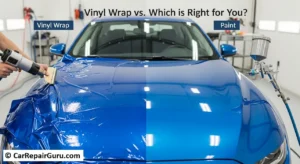
This is the great debate for anyone considering a new look. Both have their place, but they serve different purposes. Let’s break it down in this simple comparison.
| Feature | Vinyl Wrap | High-Quality Paint Job |
|---|---|---|
| Cost | $2,500 – $7,000+. More affordable for a full color change. | $5,000 – $15,000+. Very expensive for a quality color change. |
| Installation Time | 2-5 days. | 2-4 weeks. |
| Customization | Virtually limitless. Matte, satin, chrome, textures, printed graphics. | Limited. Specialty finishes are extremely expensive or unavailable. |
| Paint Protection | Excellent. Shields original paint from chips, scratches, and UV. | None. It is the paint; it requires its own protection (PPF/Ceramic). |
| Resale Value | Preserves it. Original paint remains pristine underneath. | Can lower it. A non-factory color can be a red flag for buyers. |
| Durability | 3-7 years. High-quality films are very durable. | Lifetime (with care). A permanent solution. |
| Repairability | Easy. A damaged panel can be re-wrapped to match perfectly. | Difficult. Color matching for spot repairs can be challenging. |
| Reversibility | 100% Reversible. Can be removed to restore the original look. | Permanent. The only way to reverse it is to repaint it again. |
The Verdict: If your goal is customization, paint protection, and reversibility, a vinyl wrap is the clear winner. If your car has significant body damage that needs repair or you are doing a concourse-level restoration on a classic car, a high-quality paint job is the more appropriate choice.
How Much Does a Vinyl Wrap Cost?
This is the number one question we get, and the honest answer is: it depends. The cost of a vinyl wrap is a direct reflection of the materials used, the size of your vehicle, and the expert labor required for a flawless finish. However, we can provide some realistic price ranges for a full wrap using premium films from brands like 3M or Avery Dennison.
- Small Car / Coupe (e.g., Ford Mustang, Mazda Miata): $2,500 – $4,000
- Standard Sedan (e.g., Honda Accord, Tesla Model 3): $3,000 – $5,000
- SUV / Truck (e.g., Ford F-150, Toyota 4Runner): $4,000 – $6,500
- Exotic Cars & Large SUVs (e.g., Lamborghini, Cadillac Escalade): $6,000 – $10,000+
Factors That Influence a Car Wrap’s Cost
Vehicle Size: Simply put, a larger vehicle requires more material and more time, increasing the cost.
Complexity of the Car: A car with lots of complex curves, aggressive bumpers, and intricate body lines (like a modern sports car) requires far more skill and time to wrap than a vehicle with flatter surfaces (like a cargo van).
Type & Brand of Vinyl: A standard gloss or satin car wrap will be the most affordable. Premium finishes like chrome, color-shift, and high-end textured vinyls are more expensive materials, which increases the overall price.
Full vs. Partial Wrap: You don’t have to wrap the whole car! Partial wraps are a popular, budget-friendly option. Wrapping just your roof in gloss black, your hood in carbon fiber, or your mirrors in a contrasting color can dramatically change your car’s look for a fraction of the cost of a full wrap.
Labor & Shop Reputation: This is the most critical factor. A cheap wrap often means an inexperienced installer. You are paying for the skill, precision, and guarantee of a professional shop that will properly prep the vehicle and deliver a bubble- and wrinkle-free finish that lasts.
Types of Vinyl Wraps: Finishes & Colors
The fun part of choosing a wrap is exploring the incredible variety of car wrap colors and finishes available.
Gloss & High Gloss
This is the classic, paint-like finish. It’s shiny, reflects light beautifully, and is often mistaken for a high-end paint job.
Satin
A perfect middle ground. The satin finish has a smooth, low-sheen luster that’s less reflective than gloss but more radiant than matte. It highlights a car’s body lines beautifully.
Matte
The ultimate stealth look. A matte vinyl wrap has zero shine and a flat, non-reflective surface that looks modern and unique.
Chrome & Color-Flip
These are the show-stoppers. Chrome vinyl wraps offer a mirror-like finish, while color-flip (or chameleon) films shift between multiple colors as you walk around the car.
Textured Wraps
Add a tactile dimension to your car with films that mimic the look and feel of carbon fiber wrap, brushed aluminum, or even velvet.
Custom Printed & Branded Wraps
This is where creativity takes over. For personal vehicles or commercial vehicle wraps, we can print any high-resolution image, pattern, or logo onto the vinyl for a truly bespoke look.
The Vinyl Wrap Installation Process: DIY vs. Professional
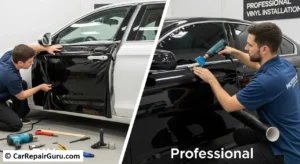
A perfect finish depends entirely on a perfect vinyl wrap installation. While it might seem tempting to save money with a DIY approach, the reality is that wrapping a car is an art form that requires immense skill and patience.
The Professional Installation Process (What to Expect)
- Consultation & Design: It all starts with a conversation. We help you choose the right color and finish and inspect your vehicle’s paint.
- Vehicle Prep: This is the most crucial step. The car undergoes a meticulous deep clean, including a chemical decontamination and clay bar treatment to remove all surface contaminants. We then disassemble parts like door handles, mirrors, lights, and badges to ensure we can tuck the vinyl edges for a seamless look.
- Application: Our certified installers carefully lay the vinyl on each panel, using a heat gun to make it pliable and a squeegee to apply it smoothly, pushing out all the air. This step requires precision and a deep understanding of how the material behaves.
- Post-Heating & Curing: Once the vinyl is applied, we go over every edge and seam with a heat gun to “post-heat” it. This activates the adhesive’s memory, locking it in place and preventing it from peeling or lifting.
- Reassembly & Quality Check: The vehicle is carefully reassembled, and we perform a final, multi-point inspection to ensure every detail is perfect before handing you the keys.
Can You DIY a Vinyl Wrap?
For small, flat surfaces like an interior trim piece, a DIY car wrap can be a fun project. For a full vehicle? We strongly advise against it. The risk of costly mistakes is extremely high:
- Bubbles, creases, and wrinkles from improper technique.
- Overstretching the film, which causes discoloration and adhesive failure.
- Accidentally cutting your car’s paint with the trimming blade.
- Wasting hundreds of dollars in vinyl material.
For a finish you’ll be proud of, professional installation is the only way to go.
Durability & Maintenance: How to Care for Your Wrap
With proper care, a vinyl wrap is a long-term investment in your vehicle’s appearance.
How Long Do Vinyl Wraps Last?
A professionally installed, high-quality vinyl wrap will last between 3 and 7 years. The final vinyl wrap durability depends on a few factors:
- Film Quality: Premium brands last longer than cheap, unbranded films.
- Climate: Constant, intense sun exposure (like in Arizona or Florida) can shorten a wrap’s lifespan compared to a milder climate.
- Care: How well you maintain the wrap is the biggest factor in its longevity.
How to Wash a Wrapped Car
Vinyl wrap care is simple but specific. Follow these rules to keep it looking new:
DO: Hand wash your car regularly using the two-bucket method and a pH-neutral, wax-free car soap.
DON’T: Take your car through an automatic car wash with brushes. These can scratch, peel, and lift the edges of the wrap.
DO: Dry the vehicle with a soft microfiber towel to prevent water spots.
DON’T: Use a pressure washer too close to the surface or aim it directly at the edges of the wrap.
DON’T: Apply traditional carnauba wax. It can cause streaking and damage on matte and satin finishes. If you want extra protection, use a spray sealant or ceramic coating specifically designed for vinyl wraps.
Protecting Your Wrap
The best way to maximize the life of your wrap is to minimize its exposure to the elements. Park in a garage or shaded area whenever possible. For the ultimate protection, ask us about applying a vinyl-specific ceramic coating, which adds a hydrophobic and UV-resistant layer.
Commercial & Fleet Vehicle Wraps: A Mobile Billboard
Vinyl wraps aren’t just for personal expression; they are one of the most powerful marketing tools a business can have. A commercial vehicle wrap transforms your company car, truck, or van into a 24/7 mobile billboard.
The ROI on fleet wraps is unmatched by traditional advertising. A single branded vehicle can generate tens of thousands of impressions per day, building brand awareness and driving local customer engagement wherever you go. From simple door logos to full, eye-popping graphic wraps, vehicle advertising is a proven way to get your business noticed.
Ready to Transform Your Ride?
You now have a complete picture of the incredible world of vinyl wraps. From the endless customization and powerful paint protection to the impressive value and total reversibility, a vehicle wrap is the modern solution for making your car truly your own. It’s an investment in style, protection, and personality.
If you’re ready to stop dreaming and start designing, our team is here to help.
Frequently Asked Questions About Vinyl Wraps
Does vinyl wrap damage car paint?
No. When installed and removed correctly by a professional, a vinyl wrap does the opposite—it protects your paint from damage. The adhesive is designed to be car-safe and won’t harm the OEM clear coat.
Can you wrap a car with peeling clear coat or rust?
Unfortunately, no. A vinyl wrap will only look as good as the surface it’s applied to. It will not stick properly to peeling paint or rust, and any surface imperfections will show through the film. The paint must be smooth and stable for a successful installation.
How do you remove a vinyl wrap?
Professional removal is highly recommended. The process involves gently heating the vinyl with a heat gun to soften the adhesive, then slowly and carefully peeling it back at a specific angle. Doing it incorrectly can leave behind a difficult-to-remove adhesive residue or, in rare cases, damage the paint.
Can you wrap just one part of a car?
Absolutely! Partial wraps are very popular. Wrapping your roof, hood, mirrors, spoiler, or chrome trim (a “chrome delete”) are all fantastic and cost-effective ways to customize your vehicle’s look without committing to a full wrap.
Is a vinyl wrap covered by insurance?
In many cases, yes, but you must inform your insurance provider. You should declare the wrap as a modification to your vehicle. This way, if the car is damaged in an accident, the cost of re-wrapping the affected panels may be covered under your policy.

